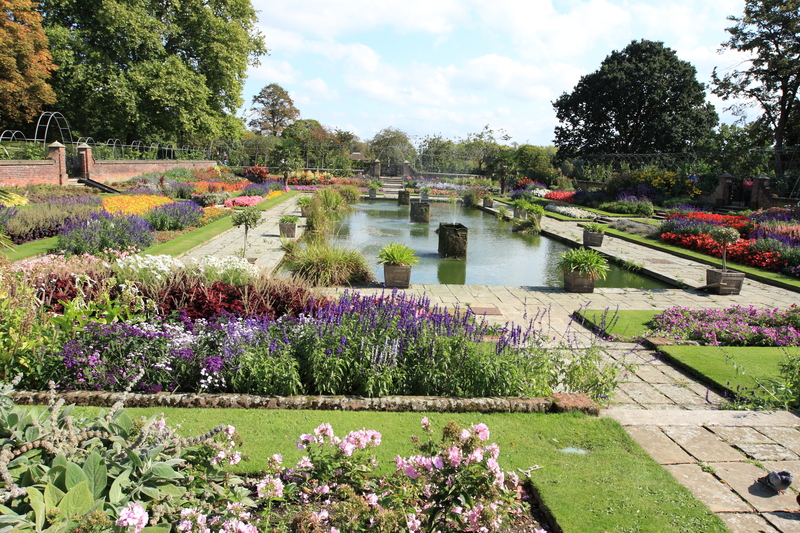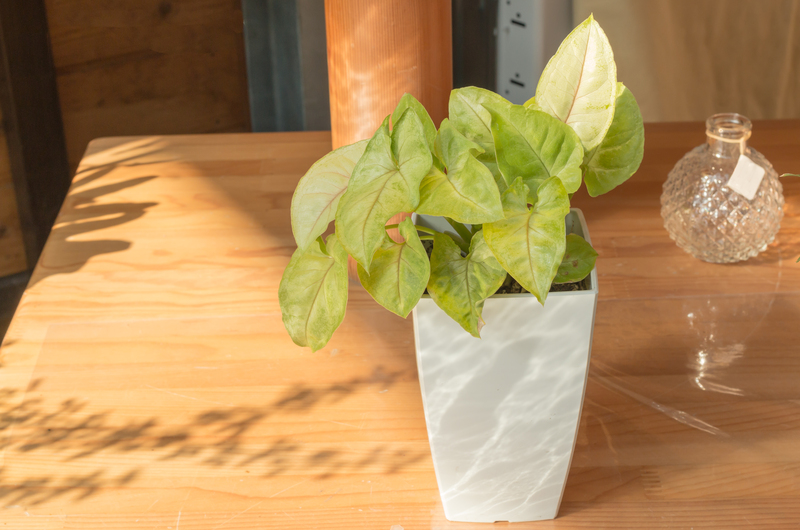Transform a Weedy Plot into a Lush Oasis
Posted on 11/06/2025
Transform a Weedy Plot into a Lush Oasis: The Complete Guide
Dreaming of turning your unruly, weed-infested garden into a lush sanctuary? With the right approach, anyone can transform a weedy plot into a vibrant oasis bursting with life, color, and tranquility. In this ultimate guide, you'll discover expert steps, actionable tips, and practical advice for reclaiming your overgrown space and cultivating the garden of your dreams. Whether you're a beginner or an experienced green thumb, these comprehensive strategies ensure your success.
Understanding the Challenge: What Makes a Plot "Weedy"?
Before you embark on your transformation journey, it's crucial to understand what's growing in your plot. 'Weeds' are simply plants in the wrong place--some are stubborn, invasive species, while others are wildflowers or self-seeded ornamentals. Left unchecked, they can choke out desired plants, deplete nutrients, and leave your garden looking neglected.
- Weeds compete for sunlight, water, and soil nutrients
- Many weeds spread quickly through seeds or roots
- Some weed types can even harbor diseases or pests
Identifying the types of weeds in your garden is the first step toward successful transformation.

Assessing Your Weedy Garden Plot
Before taking action, spend time observing and mapping your plot. Note sun exposure, soil quality, drainage, and existing desirable plants. Take photographs and draw a basic plan--it will be invaluable as you design your future oasis.
Key Assessment Factors
- Soil texture and composition: Is it sandy, clay, or loam? Is it compacted or loose?
- Microclimates: Are there areas that receive more sun or are particularly shady?
- Topography: Note any slopes or depressions, which affect water flow and plant selection.
- Existing vegetation: Identify which plants (including weeds) are thriving.
Clear the Ground: Out with the Weeds
The most transformative step in converting a weedy plot is to remove the unwanted vegetation. Be thorough and methodical:
Manual Removal
- Hand-pulling: Ideal for small areas or annual weeds with shallow roots.
- Digging: Use a spade or hoe for deep-rooted perennials like dandelions or bindweed.
Mulching Out
After removing surface weeds, smother remaining weed seeds with a thick layer of organic mulch, such as straw, wood chips, or leaf mold. Mulch suppresses light, discouraging weed regrowth.
Solarization
- Cover an infested area with clear plastic sheeting during warm months for 4-6 weeks.
- This raises soil temperature, killing weed seeds and pathogens.
Non-toxic Herbicides
- Use natural alternatives like vinegar for targeted spot treatments.
- Apply carefully to avoid harming neighboring plants.
Persistence is key: Return every few weeks for follow-up weeding to prevent a resurgence.
Improve Soil Health for a Thriving Garden
A lush oasis starts with healthy soil. After eradicating weeds, conduct a simple soil test (available from garden centers or online) to check for nutrient deficiencies, pH imbalances, and organic matter content.
Steps to Enhance Soil Quality
- Add compost: Work well-rotted compost or manure into the top 6 inches to boost fertility.
- Aerate compacted soil: Use a garden fork or aerator to improve root penetration and water movement.
- Adjust pH: Apply lime to raise pH or sulfur to lower it, according to your test results.
- Incorporate organic matter: Regularly add leaf mold, coconut coir, or green manure crops to maintain structure.
Designing Your Lush Oasis: Planning the Layout
With a blank canvas, it's time to plan your garden vision. The key to transforming a weedy lot into a lush haven lies in thoughtful design and smart plant selection.
- Define garden zones: Consider spaces for sitting, pathways, beds, and focal features like water or sculpture.
- Layer planting: Use a mixture of trees, shrubs, perennials, grasses, and groundcovers for year-round interest.
- Integrate native plants: They're adapted to your climate, require less maintenance, and support wildlife.
- Plan for seasonality: Select flowering and foliage varieties for each season.
Consider these foundational elements:
- Structure: Small trees or large shrubs anchor the space
- Movement: Ornamental grasses and swaying perennials add dynamism
- Color: Repeat colors for harmony, and contrast for excitement
- Water: Birdbaths or small ponds attract wildlife and add tranquility
Choosing Resilient, Low-Maintenance Plants
To ensure your lush garden stays beautiful with less work, prioritize plants that out-compete weeds and thrive in your conditions. Below are suggestions tailored to different climates and themes:
Top Groundcovers and Suppressors
- Ajuga (Bugleweed): Forms dense mats, great for sunny or shady spots
- Liriope (Monkey Grass): Ideal edging and weed suppression
- Geranium 'Rozanne': Sprawling, months-long blue flowers
- Thyme, sedum, creeping phlox: Tough, pretty, and drought-resistant
Flowering Perennials and Shrubs
- Coreopsis, cone flowers, bee balm: Bright colors, attract beneficial insects
- Hydrangeas, spirea, viburnum: Provide structure, blooms, and shape
Native and Drought-Tolerant Plants
- Purple prairie clover, goldenrod, yarrow (prairie styles)
- Lavender, rosemary, sage (Mediterranean styles)
- Maiden grass, switch grass, little bluestem (ornamental grasses)
Planting Techniques for Lasting Results
When planting your selections, follow best practices to maximize their vigor and minimize weeds returning:
- Plant densely: Leaves less room for weeds to regrow
- Mulch immediately: Apply 2-4 inches around new plantings
- Water well: Establish young roots for a robust start
- Feed with compost: Top-dress annually for ongoing fertility
Ongoing Maintenance Tips
Regular (but not labor-intensive) maintenance is the secret to keeping your garden lush and weed-free:
- Spot-weed quickly: Remove seedlings by hand before they mature
- Renew mulch: Top up as it breaks down to keep weeds smothered
- Water deeply and less often: Encourages deep, strong roots
- Prune thoughtfully: Shape plants for airflow and to prevent crowding
Adding Hardscape and Garden Features
Complete your oasis with structural elements that provide year-round interest and improve usability:
- Stone or gravel pathways
- Benches, pergolas or garden arches
- Water features like fountains or ponds
- Raised beds or retaining walls
- Outdoor lighting for ambiance and safety
These features reduce maintenance and create a sense of permanence amidst the plants' seasonal change.
Inviting Nature: Creating a Wildlife-Friendly Garden
Transforming a weedy plot into a lush garden needn't just benefit you. With the right plant choices, water sources, and habitats, you can attract pollinators, birds, and beneficial insects:
- Plant nectar-rich blooms for bees and butterflies
- Provide sheltered corners for frogs, hedgehogs, or lizards
- Install bird boxes, feeders, and native berry-bushes
- Use minimal chemicals to maintain a healthy ecosystem
Year-by-Year: The Evolution of Your Oasis
True transformation unfolds over several seasons. By the end of year one, you'll see dramatic improvement, but year two and beyond bring increasing beauty and resilience.
Year 2: Filling in gaps, adding more layers, establishing groundcovers.
Year 3+: Maturing plants suppress weeds, oasis effect intensifies, maintenance decreases.
Patient, consistent care rewards you with a flourishing garden that's easier to enjoy each year.
Tips for Staying Motivated and Enjoying the Process
- Take "before and after" photos to track progress
- Set small, achievable goals weekly or monthly
- Celebrate milestones--a first rose bloom, a visiting butterfly, or a picnic in your new haven
- Invite friends to help and share the reward
Common Mistakes to Avoid When Transforming a Weedy Plot
- Rushing removal: Expediting weed clearance without careful root removal leads to rapid regrowth
- Ignoring soil health: Skipping amendments can result in poor plant growth and persistent weeds
- Overcrowding or under-planting: Both make ongoing weeding more difficult
- Relying solely on chemical controls: Weakens soil and can harm wildlife

FAQs: Transforming a Weedy Plot into a Lush Oasis
-
Q: How long does it take to convert a weedy patch into a beautiful garden?
A: Major change can happen within a single season, but true lushness builds over 2-3 years as plantings mature and soil improves. -
Q: Are there any quick fixes for weed problems?
A: Solarization or sheet mulching can make a big difference in weeks, but the best, most lasting results come from integrated methods. -
Q: What if weeds keep coming back?
A: Persistence is key--deal with them when young, improve the soil, and use dense planting and mulch as natural barriers.
Conclusion: Your Weedy Plot Awaits Its Transformation
By following these expert, step-by-step strategies, anyone can transform a weedy patch of land into a lush oasis. From the initial assessment and weed removal through soil improvement, design, and planting, each phase builds toward your unique vision. Patience and consistency pay off--and soon, your garden will be a beautiful, welcoming retreat for family, friends, and nature alike. Ready your gloves and spade, because your lush oasis journey starts now!
Start small, but dream big--there's no limit to the beauty you can create from humble beginnings.

